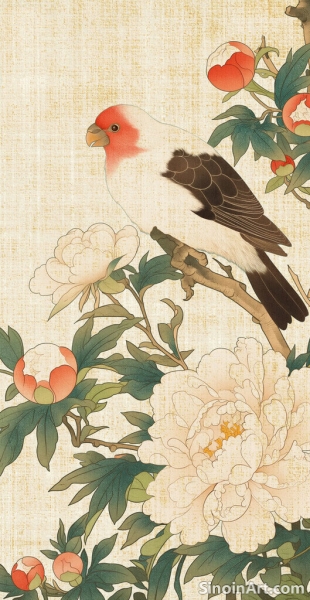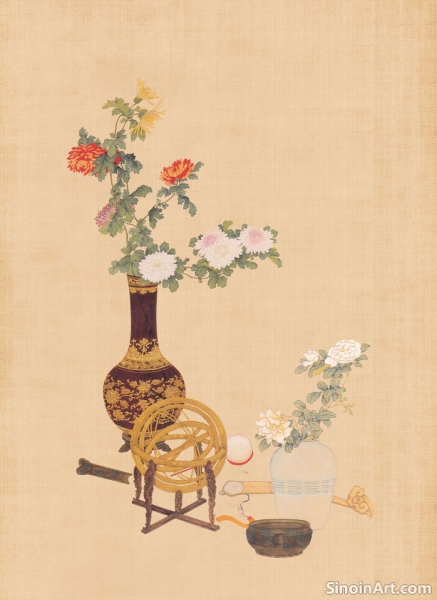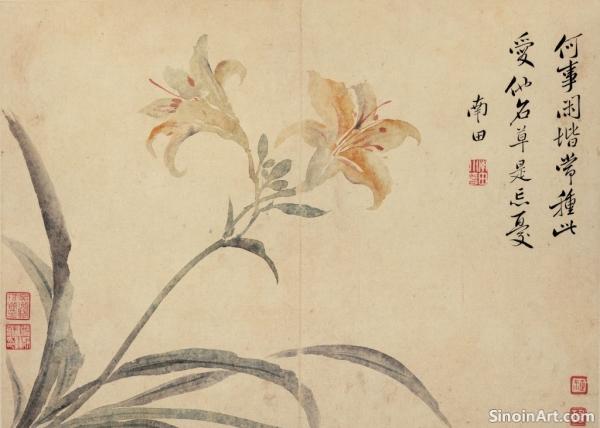The Symbolism of Gongbi: Decoding the Language of the Brush
|
Gongbi paintings are not just beautiful images; they are often rich with symbolism, deeply rooted in Chinese culture and tradition. Understanding these symbolic elements is key to appreciating the deeper meaning behind the meticulous details and vibrant colors. Every element, from the choice of subject matter to the colors used, is intentional, often conveying specific messages and auspicious meanings. The painting becomes a visual language, communicating subtle nuances and cultural values.  Flowers and plants are prominent subjects in Gongbi painting, each bearing a unique symbolic meaning. For instance, the lotus flower, often depicted in its full glory, represents purity and enlightenment. The peony, with its rich, vibrant blooms, symbolizes wealth and prosperity. Bamboo, often depicted swaying gracefully, represents resilience and humility. Even the simple plum blossom, braving the winter cold, symbolizes perseverance and courage. The artist carefully chooses the subject based on the message they wish to convey.  Animals, like flowers, are also laden with symbolism in Gongbi painting. The dragon, a mythical creature, represents power and imperial authority. The phoenix, another mythical bird, symbolizes rebirth and immortality. Cranes, often depicted with elegant grace, are symbols of longevity and happiness. Each animal, whether real or mythical, has its place within the symbolic language of the painting. The placement and attitude of these creatures enhance their symbolic expression.  Colors, too, play a crucial role in the symbolic language of Gongbi painting. Red, a vibrant and auspicious color, represents good fortune, joy, and celebration. Yellow, often associated with royalty, symbolizes power, prosperity, and wisdom. Green represents growth, harmony, and nature, while blue conveys peace and serenity. The artist strategically uses color to further enhance the underlying messages and emotions within the artwork. Beyond individual elements, the overall composition of a Gongbi painting can also be symbolic. The use of negative space, often referred to as ‘white space,’ can convey a sense of vastness or emptiness, and it can also highlight the importance of the central subject. The way elements are arranged within the composition can also tell a story or create a narrative, encouraging viewers to look deeper into the painting's meaning. By understanding the rich symbolism within Gongbi paintings, viewers can appreciate them on a deeper, more meaningful level. It is not just a visual experience but a journey into the heart of Chinese culture and tradition. This symbolic language adds layers of meaning that elevate the art form beyond mere representation. |
Tag : Symbolism in Gongbi, Chinese Art Symbols, Flower Symbolism, Animal Symbolism, Color Symbolism
Related information
- The Depiction of Flowers and Birds in Gongbi: A Symbolism Unveiled
- Learning Gongbi: Steps for Aspiring Artists
- Gongbi Painting and its Place in Contemporary Art Discourse
- Gongbi and Xieyi: Two Sides of the Brush
- Commissioning a Gongbi Painting: What You Need to Know
This article explores the depiction of flowers and birds in Gongbi painting, focusing on their symbolic meanings, the techniques used in their rendering, and their role in conveying both beauty and cultural narratives.
This article provides a guide for aspiring Gongbi artists, outlining the steps involved in learning the art form, including mastering brushwork, outlining, color application, understanding traditional motifs, and the importance of patience.
This article explores the place of Gongbi painting in contemporary art discourse, highlighting how artists are using the art form to address modern concerns, engage with tradition, and contribute to a wider global artistic conversation.
This article contrasts Gongbi and Xieyi painting styles, highlighting their differing approaches to brushwork, techniques, subject matter, and overall artistic expression.
This article provides a guide for those interested in commissioning a Gongbi painting, highlighting the importance of clear communication, artist selection, understanding the process, setting realistic timelines, and managing budget expectations.